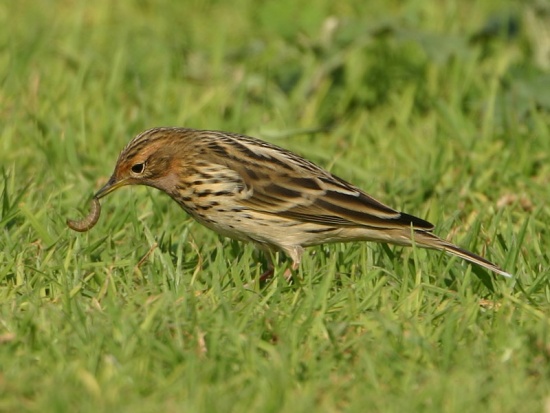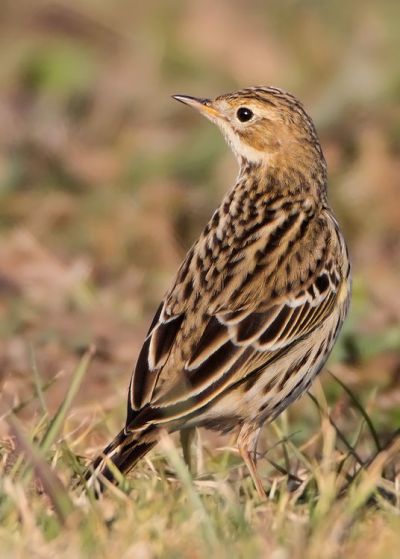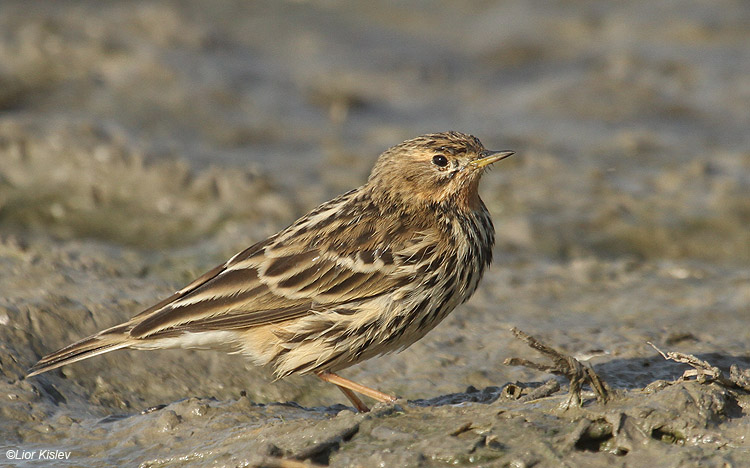
Anthus cervinus
TAXONOMY
Motacilla cervinus Pallas, 1811, Kolmya, Siberia.
OTHER COMMON NAMES
French: Pipit а gorge rousse; German: Rotkehlpieper; Spanish:
Bisbita Gorgirrojo.
PHYSICAL CHARACTERISTICS
5.7–5.9 in (14.5–15 cm); 0.6–1 oz (16.5–29 g). Upperparts are
dark brown with black and whitish streaks on the back. Underparts
are buffy with dark streaks across the breast and onto the
flanks. Wings are blackish with whitish bars and the tail is
black with white outer tail feathers. In the breeding season,
breeding males develop a reddish head, throat, and breast; the
head and breast of females and nonbreeding males is duller.
DISTRIBUTION
Breeds in northern Scandinavia east through arctic Russia to
Bering Strait and western Alaska; winters in east Africa south
to Tanzania, Turkey, Middle East, and southeast China, southeast
Asia, and northern Indonesia.
HABITAT
Shrubby or mossy tundra, and willow/birch swamps; also damp
grassy flats. In winter, on short-grazed grassland, especially with
mud or shallow water; also mudflats, ploughland and moorland.
BEHAVIOR
Territorial when breeding. In winter, often forms large, loose
flocks. Often perches on rocks, bushes and fences. Male displays
with horizontal or parachuting song flight.
FEEDING ECOLOGY AND DIET
Forages on the ground, probing amongst vegetation for insects.
REPRODUCTIVE BIOLOGY
Monogamous; breeds May though August. Nest is a hollow
(made by male) in moss or ground, with cup of grass, lined
hair and feathers; female builds. Lays two to seven eggs; incubation
is 11–14 days, by female; fledging after 11–15 days.
CONSERVATION STATUS
Not threatened. Locally abundant, but facing extinction in Finland;
no major range changes recorded.
SIGNIFICANCE TO HUMANS
None known.
Other popular Animals
Photo Gallery of - Red-throated pipit




 Animalia Life
Animalia Life